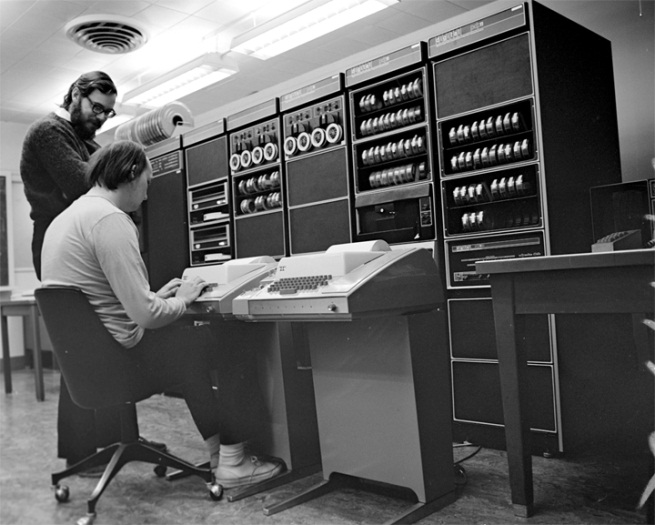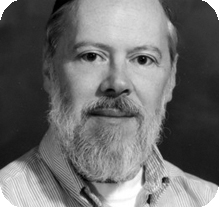
Dennis M. Ritchie

MIT Project MAC
MIT Project MAC began in 1963, with funding from the US Department of Defense Advanced Research Projects Agency. One of its goals was to build an advanced time-sharing system named Multics. The Multics project used MIT's CTSS time-sharing system as a development tool. See also the 1990 Turing Award Winner, Fernando J. Corbató. {insert link to Corbato’s Turing award page}
Bell Labs
Other people in the Bell Laboratories included Peter Neumann, Joseph Ossanna, Doug McIlroy, Robert M Morris, Rudd Canaday, Brian Kernighan, Victor Vyssotsky, Douglas Eastwood.
The BCPL language was designed at Cambridge University in 1966 by Martin Richards. It is a typeless block-structured imperative language that allows programs to access memory without checking. BCPL was designed to be easily portable to multiple system environments. Project MAC memo MAC-M-352 describes the language and its first compiler implementation.
The Compatible Time-Sharing System was developed for the IBM 7094 by MIT’s Computation Center and first demonstrated in 1961.
GECOS was a batch processing system for the General Electric GE-600 line of mainframe computers. Bell Laboratories and MIT used GECOS to support Multics development and debugging.
The PDP-7 was introduced by Digital Equipment Corporation in 1964. About 100 were made. The machine had 4K of 18-bit words and cost $72,000.
In 1970, Digital Equipment introduced the PDP-11 minicomputer, which had a 16-bit word size and an architecture that made adding new devices simple. It became very popular; hundreds of thousands were shipped before production ended in 1997.

Ken Thompson and Dennis Ritchie (seated) working at the PDP-11.
A LinuxFocus.org interview transcript is available here.
Princeton provides a transcript of an interview with Ritchie conducted by Mike Mahoney here.




























 THE A.M. TURING AWARD
THE A.M. TURING AWARD